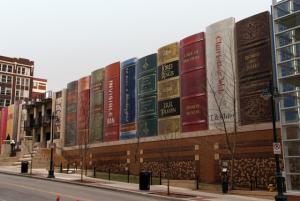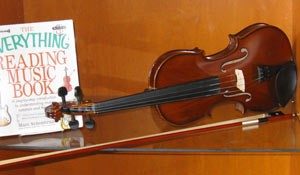The Renewing library – a culture, knowledge and education center
The developments in public libraries are many; starting with the changes experienced by end users, their reading habits and the need for information, through technological innovations entering the field, to the expanding of the library’s role and how it is perceived and serves the communities in which it is located. The second article of the series about the “Renewing Library” will focus on the turning of the library from a place for lending books to culture, knowledge and education centers and thus becoming an integral part of the community in which they are located. This is manifested both in the collections offered by the library (not just books) and in terms of activities and services provided to the residents in a variety of areas.
Structurally libraries are going through internal and external changes – forming new interior spaces, semiprivate spaces and technology-intensive spaces, adding recreation areas and coffee bars within the library building using attractive and unique designs as well as changing geographic location. For example, proximity to shopping centers increases the number of visitors to the library, and more.
The public library in Kansas City
The “Kotar Rishon” library – in Rishon Lezion. No more shelves lined with books: a whole floor was converted into a library dedicated to toddlers and children and offers residents a variety of activities for mothers and babies, story time, literacy learning through computer games, plays and more.
In the content field – you can see the connections of the library to archive and /or museum collections that enrich the library catalog with culture, history and heritage content. As well as topics of research and studies relevant for the library’s users. At the same time we are witnessing the entry of special collections into the library catalogs, which are created by the libraries themselves – Special Collections, collections of photos, movies, music, and other digital collections.
The Public Library of Washington has established an entire musical section offering musical content. You can download albums for 7 days using the library card in the HOOPLA 
In addition, the library offers a service of lending musical instruments.
As part of cooperation with the music school next door, the library allows to borrow the various
music instruments – guitars, violins, Hawaiian guitars, recorders, electronic keyboards, cellos, banjos and other instruments such as French horn and flugelhorn.
NY Public Library went so far as to provide its residents with a variety of special collections created and collected by the library staff. For example, “What’s on the Menu?” is a historical collection of restaurant menus arranged by the Public Library, and it includes a database of old restaurant menus. All menus have been scanned and uploaded to the Internet and are considered historical documents through which one can learn about the culinary tastes of the residents of New York City through the ages, the changes in tastes over the years.
Another collection in the library catalog is a collection of unique maps called BUILDING INSPECTOR. The library has developed a computerized system for identifying buildings in old maps of New York, and uses public help in deciphering the computerized system, and in order to get all the missing details of the original maps: building blueprints, addresses, building materials and more; Clues that will help them create stories about the city. The aim of the project is to give access to all the information on the Internet, after the digitization of all the material, in order to provide the public with new information about the history of the city: “It will allow you to explore a city’s past, ‘checking in’ to ghostly establishments, and to link other historical documents to those places: archival records, old newspapers, business directories…)” etc.
These examples and many more, give voice to the ALM trend which enables the consolidation of cultural and historical heritage content under one roof (eg the library), to provide end users with all the information in one central place.
How are these trends and needs reflected in the IDEA system, and how to apply the joining and cataloging of a variety of collections within one central system?
IDEA Information Systems offers the ALM solution for managing the archive, library and museum on one central data base. Based on this infrastructure, public libraries (computerized in IDEA Lib system) can enrich the content of their catalog with a variety of content and material types without limitation. IDEA system basically consists of a large number of templates that describe culture and heritage objects and therefore provides easy implementing of new materials in the system – documents, music, drawings, presentations, images, slideshows, menus, maps as well as artifacts, ethnic exhibitions, jewelry and more.
For example, the Ramat Gan Municipality computerized the three city’s heritage organizations in IDEA (archive, museum and public library network) including a unified search interface for the benefit of residents of the city through which you can get all the cultural, historical and heritage information about the city of Ramat Gan in one central site.
Matte Asher Regional Council has integrated a collection of historical photographs within the library catalog – “The legacy pictures catalog“. The collection displays images of all the communities in the Regional Council from the days of their establishment to the present, which includes thousands of items scanned and cataloged in IDEA and available for the benefit of the public in the web interface, alongside library databases and materials. You can find documents, presentations, photos of establishing communities, events, art exhibitions, scans of newsletters, family albums, etc.
In conclusion, in order to remain relevant, the public libraries must adapt to new expectations and to the high threshold raised by the communities they serve – not just a place to borrow books, but knowledge centers, information services, culture, education and leisure. Thus, libraries will be able to consolidate their status as an integral part of the community.
“It is not the strongest of the species that survives, nor the most intelligent, but rather the one most adaptable to change.”
Charles Darwin
In the next article of the series: what does the future hold for the realm of public libraries? Will we see more and more combinations of advanced technologies in libraries or will the focus be on professional services and knowledge of the librarian? And who is going to be at the center – technology, librarian or users?











